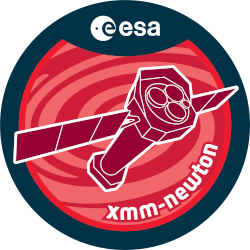

| Proposal ID | 030021 |
| Title | The Local Galaxy Cluster Mass Function of the Brightest Clusters in the Sky |
| Download Data Associated to the proposal | https://nxsa.esac.esa.int/nxsa-sl/servlet/data-action-aio?obsno=0300210201 |
| DOI | https://doi.org/10.5270/esa-r6nq1h2 |
| Principal Investigator, PI | Dr Thomas Reiprich |
| Abstract | Galaxy clusters have proven to be highly competitive and complementary cosmo-logical probes. For the next major breakthrough more reliable mass estimatesand, therefore, a better understanding of cluster physics are essential. Wepropose to complete XMM-Newton observations of a flux-limited sample of the 63X-ray brightest clusters in the sky to (i) take full advantage of ~3Ms ofXMM-Newton data already available, (ii) determine very precise gas temperatureprofiles, (iii) characterize merging clusters by direct comparison tosimulations, (iv) update the luminosity--mass relation, (v) construct the mostprecise local cluster mass function, (vi) improve constraints on OmegaM andsigma8 significantly, and (vii) provide a reliable statistical baseline for comparison to high-redshift samples. |
| Publications |
|
| Instrument | EMOS1, EMOS2, EPN, OM, RGS1, RGS2 |
| Temporal Coverage | 2005-06-24T13:04:39Z/2006-06-24T20:35:16Z |
| Version | 17.56_20190403_1200 |
| Mission Description | The European Space Agencys (ESA) X-ray Multi-Mirror Mission (XMM-Newton) was launched by an Ariane 504 on December 10th 1999. XMM-Newton is ESAs second cornerstone of the Horizon 2000 Science Programme. It carries 3 high throughput X-ray telescopes with an unprecedented effective area, and an optical monitor, the first flown on a X-ray observatory. The large collecting area and ability to make long uninterrupted exposures provide highly sensitive observations. Since Earths atmosphere blocks out all X-rays, only a telescope in space can detect and study celestial X-ray sources. The XMM-Newton mission is helping scientists to solve a number of cosmic mysteries, ranging from the enigmatic black holes to the origins of the Universe itself. Observing time on XMM-Newton is being made available to the scientific community, applying for observational periods on a competitive basis. |
| Creator Contact | https://www.cosmos.esa.int/web/xmm-newton/xmm-newton-helpdesk |
| Date Published | 2008-01-05T00:00:00Z |
| Last Update | 2025-08-04 |
| Keywords | "XMM", "reliable statistical baseline", "XMM-Newton", "flux limited sample", "iv update", "xmm newton data", "merging cluster", "complete xmm newton", "redshift samples", "cluster physics", "reliable mass", "major breakthrough", "xray brightest cluster", "galaxy cluster", "luminosity mass relation", "brightest cluster" |
| Publisher And Registrant | European Space Agency |
| Credit Guidelines | European Space Agency, Dr Thomas Reiprich, 2008, 'The Local Galaxy Cluster Mass Function of the Brightest Clusters in the Sky', 17.56_20190403_1200, European Space Agency, https://doi.org/10.5270/esa-r6nq1h2 |